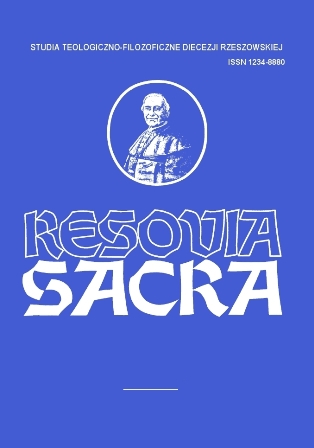Matematyczny model budowy świata i czaso-przesrzeni w koncepcji św. Augustyna na podstawie "Confessiones" i "De civitate Dei"
Mathematical model of creating world and space and time presented by St Augustine in Confessiones and De civitate Dei
Author(s): Olga CyrekSubject(s): Christian Theology and Religion, History, History of ideas, Theology and Religion
Published by: Instytut Teologiczno-Pastoralny im. św. Józefa Sebastiana Pelczara w Rzeszowie
Summary/Abstract: The purpose of the article is to demonstrate St Augustine’s views on the beginnings of the world, space and time, matter and form and time measurement. A theologian from Thagaste distinguishes two realms: spiritual and physical (heaven and earth). Both heaven of heaven and formless matter were made outside time, however, all other creatures in time. They were created out of formless matter and therefore are characterized by constant changeability. Besides a psychological issue of time, St Augustine also deals with a metaphysical problem of time. He attempts to discover a relationship between something that is constant and unchangeable and something that is temporary and changeable. In his opinion, time is a sort of distention of the soul and inside the soul there is a possibility of coexistence of future, present and past. He emphasizes that only sensible soul can tie together three dimensions of time, in spite of the fact that the present itself is hard to pin down and even cannot be said to exist. In a symbolic way, a Christian thinker also explains the meaning of some numbers, especially, three, six and seven.
Journal: Resovia Sacra. Studia Teologiczno-Filozoficzne Diecezji Rzeszowskiej
- Issue Year: 2010
- Issue No: 17
- Page Range: 33-50
- Page Count: 18
- Language: Polish

